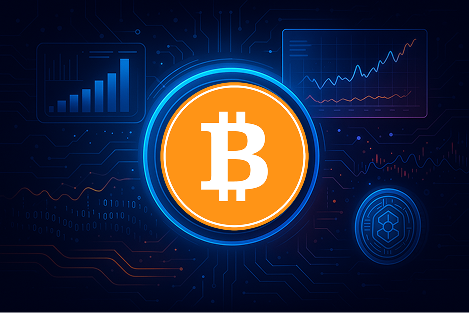Holo (HOT): Analysis, How It Works, and How to Invest

Introduction – Holo: Analysis, How It Works & Token Purchase Strategy
Holo (HOT) is an alternative cryptocurrency offering a radically different approach to traditional blockchains. Built on Holochain architecture, it aims to provide a decentralized infrastructure for peer-to-peer (P2P) application hosting without using a classic blockchain. This innovative method draws interest from dApp developers, Web3 advocates, and technology-focused investors. This article offers a deep dive into Holo’s project, exploring Holochain’s technical workings, the value proposition of HOT, the ecosystem, practical use cases, and how to securely purchase and invest in Holo.Key takeaways
- Short-term volatility: influenced by Holochain’s development progress and tech announcements
- Core growth drivers: Holochain adoption, scalability, low energy footprint, community engagement
- Long-term potential: high, built on a post-blockchain architecture and clear utility within a P2P web
- Positioning: eco-efficient alternative to traditional blockchains—focused on data and distributed apps
Project Overview – What Is Holo (HOT)?
Holo is an alternative decentralized infrastructure project built on Holochain, distinguished by its blockchain-free approach. Instead of validating all transactions via a single global chain, every Holochain user maintains their own data chain, synchronizing efficiently and coherently across the network. Holo’s goal is to provide distributed hosting for decentralized apps (hApps), with participants compensated via the HOT token.Core Details
- Token name: HOT (Holo Token)
- Network: ERC-20 on Ethereum (interim), planned migration to native HoloFuel
- Category: Decentralized Infrastructure / Web3 / Post-Blockchain
- Primary function: Fuel for distributed hApp hosting on the Holo network
Project Objective
Holo aims to offer a more user-centric, scalable, and energy-efficient alternative to blockchain platforms. While Bitcoin and Ethereum consume extensive resources validating shared blocks, Holochain is agent-centric, enabling potentially limitless scalability, extremely low energy usage, and enhanced data sovereignty.The HOT Token
HOT is a transitional ERC-20 token that will eventually be exchanged for HoloFuel, the native fuel for the Holo network. HoloFuel compensates hApp hosts based on their provided bandwidth, storage, and compute time.Holo’s Vision
- Decentralize application hosting
- Provide a Web3 infrastructure without blockchain
- Support a more ethical, privacy-first, distributed internet
- Empower users with control over their own data
How Holo Works – A Simplified Technical Overview
Holo is built on Holochain, which fundamentally differs from traditional blockchains. Instead of a global transaction ledger, Holochain operates on an agent-centric model—each user maintains their own data chain, syncing only when necessary.Holochain vs. Blockchain
| Benchmark | Blockchain (e.g. Ethereum) | Holochain |
| Architecture | Global shared ledger | Individual agent data chains |
| Scalability | Limited by global consensus | Potentially limitless |
| Validation | Network-wide consensus | Local proof of consistency |
| Energy use | High (PoW, PoS systems) | Very low |
| Latency | Seconds to minutes | Milliseconds |
HoloFuel: Holo’s Native Currency
Unlike the transitional HOT token, HoloFuel is the native currency of the Holo network. Its design is purpose-built to:- Pay hApp hosts for bandwidth, storage, and compute
- Enable microtransactions with negligible fees
- Reflect the real-time resource usage in a mutualist economic model
Peer-to-Peer (P2P) Hosting
Developers deploy hApps onto the Holo network, which are hosted by individuals or businesses offering compute resources. In return, hosts earn HoloFuel.Benefits include:
- No central servers needed
- Geographic resource distribution
- Low entry barriers for developers
- Greater resilience and privacy
Project History & Origins of Holo
Holo stands apart as a robust alternative to financial-focused crypto projects. It finds its roots in open-source driven development, ethical software, and rethinking global digital infrastructure.Milestones
- 2016: Holochain architecture development begins
- 2017: Official founding of Holo; Holochain development starts
- 2018: HOT ICO raises over $20 million; intended for conversion to HoloFuel
- 2019–2021: Launch of HoloPorts (hosting nodes), early hApps, alpha release of Holochain framework
- 2022–2023: Stable versions of Holochain SDK released; HOT-to-HoloFuel conversion pilots start
- 2024: Developer adoption grows; integrations with Web3 data sovereignty projects
Structure and Philosophy
- Organizations: Holo Ltd. (registered in Gibraltar) and The Holochain Foundation (non-profit)
- Core values: Transparency, decentralization, resiliency, and privacy rights
Founders and Team
Founders and Their Vision
Co-founders Arthur Brock and Eric Harris-Braun are pioneers of distributed systems. Their goal: establish a peer-to-peer Web, with apps and data exchanged directly between users. They also launched MetaCurrency Project, exploring community currencies and coordination systems outside blockchain.What Makes [Nom cryptomonnaie] Unique?
Unique Features & Use Cases of Holo (HOT)
Holo is more than a technical innovation—it’s an ethical, sustainable alternative to resource-heavy blockchains, shaped around user-centric, practical uses.1. Post‑Blockchain Architecture via Holochain
- Users manage their own signed data
- P2P sync through DHT without global consensus
- Enables a scalable, eco-friendly, decentralized dApp environment
2. Distributed Hosting (Holo Hosting)
Apps run on HoloPorts or personal computers, with hosts compensated in HoloFuel. Practical use cases:- Serverless social networks (alternatives to Twitter/Discord)
- Encrypted messaging tools
- Collaborative distributed apps ( wikis, CRMs )
- Decentralized data sharing platforms
3. Dual Token Model: HOT vs. HoloFuel
- HOT: transitional Ethereum-based token for fundraising and early access
- HoloFuel: stable, resource-backed native currency
4. Data Sovereignty & Decentralization
Apps built on Holochain are serverless—each user controls their own data. Examples:- Social media without censorship or data mining
- Private collaborative platforms for sovereign orgs
- Secure health or education systems

5. Growing Ecosystem of hApps
Current hApps in active development include:- Elemental Chat: fully decentralized messaging
- Acorn: collaborative project planner
- RedGrid: intelligent energy grid
- Junto: ethical social network
Conclusion & Future Outlook for Holo (HOT)
Holo (HOT) represents far more than an ERC‑20 token—it’s the gateway to a groundbreaking infrastructure for decentralized applications. With its agent-centric Holochain, Holo offers a scalable, low-energy, privacy-first alternative to Ethereum, Solana, and even Layer 2 networks. Future potential hinges on key milestones: full HoloFuel rollout, developer adoption of hApps, and growth of hosting participation. Community engagement, transparent governance, and lack of venture-capital influence bolster its credibility.Why Pay Attention to Holo Today?
- Prepare for the shift to post-blockchain infrastructure
- Support an ethical, decentralized, sustainable Internet
- Benefit from real-world Web3 and data-use cases
- Diversify your crypto portfolio with a uniquely positioned project

FAQ – All About Holo (HOT)
- What is the HOT token’s purpose? HOT is a temporary token for accessing hosting services on the Holo network. It will gradually be replaced by HoloFuel, a non-speculative native token for computing resources.
- Is Holo a good investment? Holo offers unique technology outside traditional blockchains. Although still in early rollout, its sustainable, privacy-driven, and scalable infrastructure makes it an appealing long-term crypto investment.
- What’s the difference between Holo and Holochain? Holo offers access to Holochain-based hApps via hosting. Holochain is the underlying, blockchain-free infrastructure.
- Where can you buy HOT? HOT is available on exchanges like Binance, Gate.io, Bitget, and MEXC—use secure affiliate links for easy access.
- Where can you store HOT? HOT is an ERC-20 token and can be stored in wallets like MetaMask, Ledger, Trust Wallet, or Trezor.
- Is the project secure? Yes. Holo uses distributed DHT-based validation and cryptographic signatures. It avoids the vulnerabilities of centralized or overloaded blockchain nodes.
- Will HOT be replaced by HoloFuel? Yes. HOT is a transitional token. Eventually, holders will swap HOT for HoloFuel once the full ecosystem launches.
Disclaimer :
Trading is risky and you may lose all or part of your capital. The information provided does not constitute financial advice and/or an investment recommendation
Top-Rated Platforms to Trade Crypto
Explore Our Financial Views on the Market
Crypto News & Insights
Digital Assets Forum 2026 returns to
The Digital Assets Forum (DAF), one of Europe’s most respected...
Blockchain and Cryptocurrency Conference (B2C’ 2025):
The Blockchain and Cryptocurrency Conference (B2C’ 2025) is scheduled for...
European Tax Regulation on Cryptocurrencies: Understanding
The regulation of the cryptocurrencies market in the European Union...













